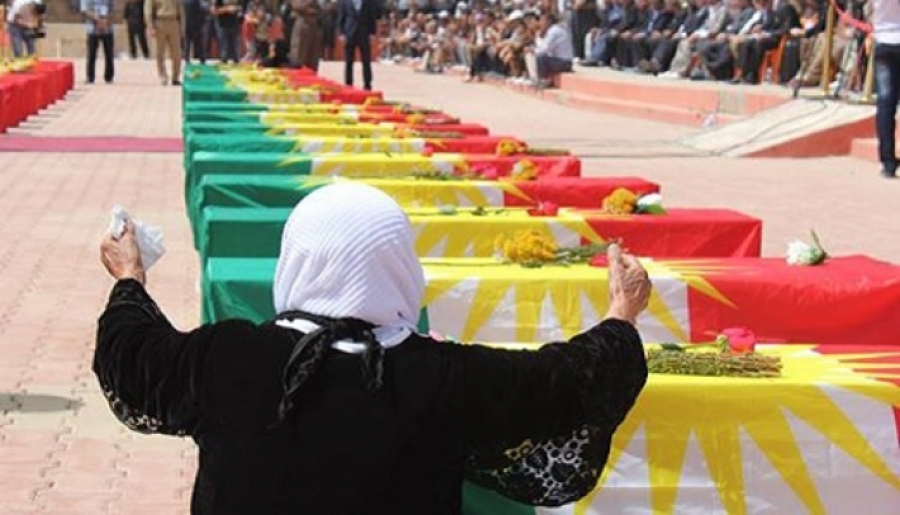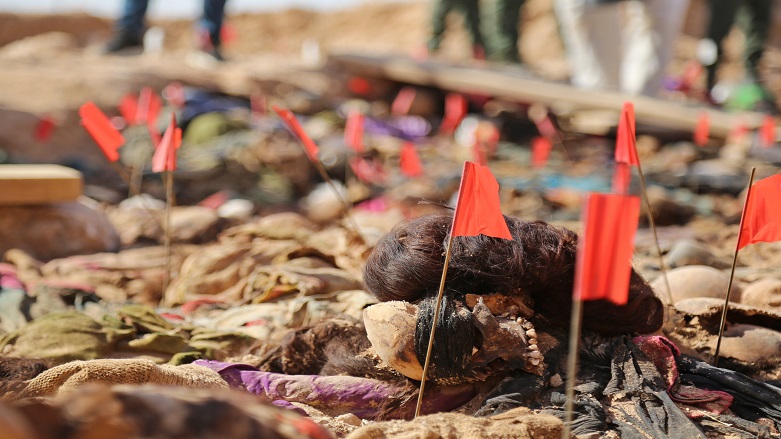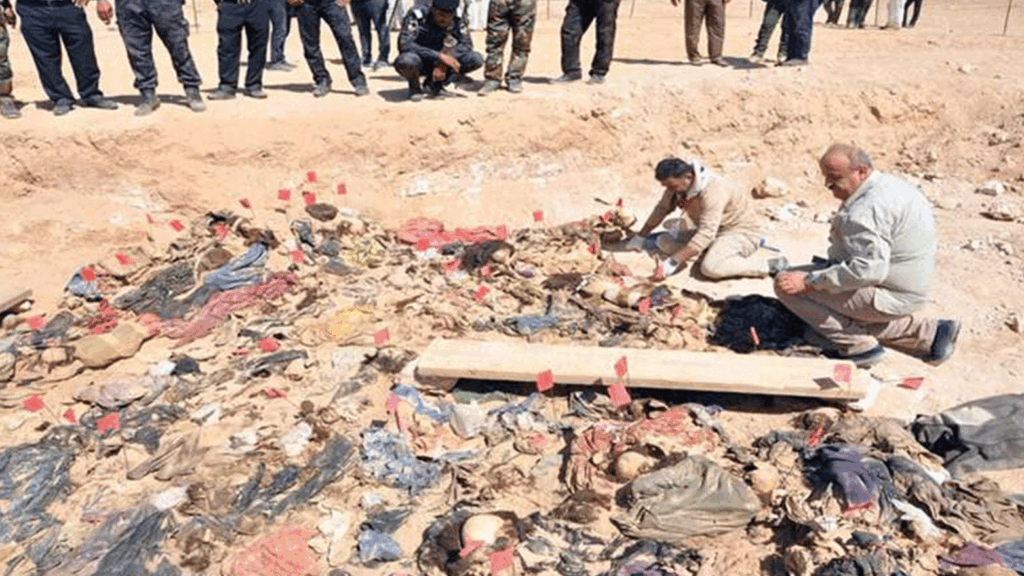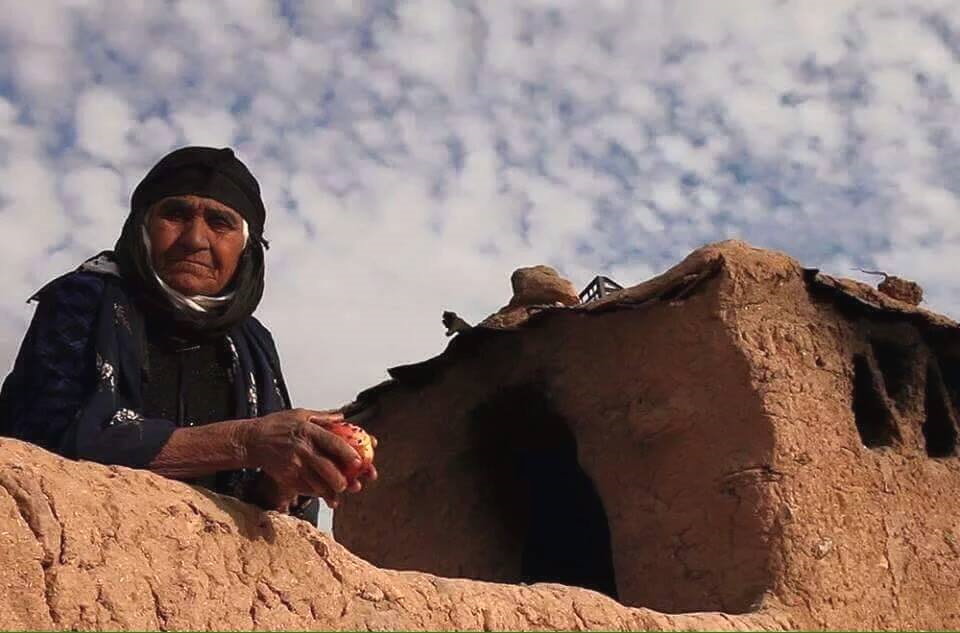Today marks the solemn 37th anniversary of one of history’s most systematic yet overlooked genocides. On April 14, 1988, the Anfal Campaign against Kurdistan intensified, particularly devastating the Shorsh district of Chamchamal and Rizgari district of Kalar. Up to 182,000 Kurdish lives were erased through mass executions, chemical attacks, and forced disappearances. As Kurdistan commemorates this dark chapter, the survivors’ testimonies ensure these atrocities are neither forgotten nor repeated.
The Vanishing Villages of Garmiyan
The morning fog still hung over the hills surrounding Shorsh district when Hawre awoke to the sound of military vehicles. At fifty-seven, he had lived through numerous conflicts, but something about the methodical way the soldiers moved through his village sent ice through his veins. This was different from previous raids.
“They have lists,” his neighbor Rashid whispered as they watched from behind a stone wall. “They’re checking names against documents.”
Shorsh district, with its cluster of small villages scattered across the highlands of Chamchamal, had long been suspected by the Ba’athist regime of harboring peshmerga fighters. What the regime failed to understand was that these were simple farming communities – people whose connection to the land stretched back countless generations.
By midday, the soldiers had separated the villagers into groups: men and boys over twelve in one area, women and younger children in another, the elderly in a third. Hawre’s wife Nazdar clutched their grandson to her chest while their daughter Shilan stood frozen in terror.
“I am a teacher, not a fighter,” Hawre protested when soldiers bound his hands. The officer merely checked his clipboard and nodded to his men. That was the last time Shilan saw her father.
By nightfall, all 32 villages in Shorsh district had been emptied. Government bulldozers arrived the following week to raze the buildings to their foundations. Animals were slaughtered, wells poisoned, and orchards burned. The Ba’athist regime intended not just to remove the people but to erase any evidence they had ever existed.
Today, 37 years later, small memorial stones mark where these villages once stood. Shilan, now in her sixties, returns every April 14th to place wildflowers where her family home once stood. Of the 4,300 residents of Shorsh district, nearly 3,800 disappeared during Anfal. Mass graves discovered in the southern deserts in 2004 finally confirmed what families had feared for decades.

The Night of Disappearance in Kalar
Kalar’s Rizgari district had always been known for its fertile soil and the resilience of its people. Aras had spent his life tending the land like his father before him. On the night of April 14, 1988, he had just finished telling his children a Kurdish folktale when the sound of trucks broke the night’s silence.
“Get the emergency bags,” he told his wife Tara, referring to the small bundles every Kurdish family kept ready – containing documents, family photographs, and essential medicines. Years of persecution had taught them to be prepared.
But there would be no escape this time. The entire Rizgari district had been surrounded during the night. As dawn broke, loudspeakers ordered everyone to the central square. Chemical Ali’s forces had arrived to implement what military documents would later describe as “final processing of the Rizgari problem.”
“They’re taking everyone,” Tara whispered in horror as they watched neighbors being loaded onto covered military vehicles. Children cried for parents, elderly couples held hands as they were separated, and young men fought until gunshots silenced their resistance.
Aras pushed his son Soran into his wife’s arms. “Whatever happens, teach him our language, our songs,” he said. Minutes later, he was among the thousand men marched at gunpoint toward waiting transports.
Of the 2,800 residents taken from Rizgari that day, only 212 women and children would eventually return from detention centers in the south. The men – including Aras – disappeared entirely. Years later, declassified military documents would confirm they had been taken to the Nugra Salman prison before being executed and buried in mass graves in the Muthanna Governorate.
Today, the rebuilt community of Rizgari holds one of Kurdistan’s most detailed memorial museums, where photographs and possessions of the disappeared are displayed alongside the recovered documents that sealed their fate.

The Children Who Returned
The detention center at Topzawa processed thousands of Kurdish families. Bayan was just eight years old when she arrived with her mother and three siblings from Rizgari district. The memory of that first night – the screams, the separation, the uncertainty – would haunt her dreams for decades.
“Men to the right, women and children to the left,” a guard had shouted in Arabic. “Quickly!”
Bayan watched as her father and teenage brother were led away. Her mother Shireen gripped her remaining children’s hands so tightly it left marks.
What followed were months of systematic dehumanization. Food was scarce, water often contaminated. Many children died from easily treatable illnesses. Guards forbade speaking Kurdish, beating anyone caught whispering in their mother tongue.
“We will remake you as proper Iraqis,” the camp commander announced during inspections. “Forget Kurdistan. It does not exist.”
Bayan’s younger sister Lana stopped speaking altogether. Her brother Diyar developed a permanent nervous tic. But perhaps most devastating was watching their mother’s spirit break a little more each day as she realized her husband and eldest son would never return.
When international pressure finally forced the regime to release some detainees in late 1988, Bayan’s family was among those sent to “collective towns” – sterile government settlements where they remained under surveillance. Their village in Rizgari no longer existed; satellite imagery later confirmed it had been completely razed and the land plowed under.
Today, Bayan leads the Anfal Children’s Testimony Project, recording the stories of survivors who were children during the campaign. On this anniversary, she organizes yearly gatherings where survivors share memories of their lost villages.
“We were not just victims,” she tells groups of schoolchildren visiting the memorial. “We were witnesses. And now we are the memory-keepers.”
The Documentation of Genocide
Among the most damning evidence of the Anfal Campaign’s genocidal intent were the meticulous records kept by the regime itself. Dilshad had been a junior officer in the Iraqi military, assigned to administrative duties in the Chamchamal region. What he witnessed in those offices would eventually lead him to risk everything to preserve evidence.
“These documents are marked for destruction next week,” his supervisor had informed him, pointing to cabinets containing operational orders for Shorsh district. “Make sure they’re properly disposed of.”
Instead, Dilshad spent late nights secretly photocopying directives that outlined the “special handling” of Kurdish populations. The language was clinical but the intent unmistakable: “complete processing,” “permanent solution,” and “demographic correction” were euphemisms for mass murder.
Most disturbing were the maps marking Kurdish villages in Shorsh and Rizgari districts with different colored pins – indicating whether they were to be destroyed immediately or processed in phases. Next to these were population counts, detailed down to the number of men of fighting age in each community.
When the 1991 Kurdish uprising provided an opportunity, Dilshad fled to the mountains with boxes of documents. These papers – which he delivered to Kurdish authorities and later to international human rights organizations – became crucial evidence in recognizing Anfal as genocide.
“The Ba’athists documented their own crimes,” he would later testify before an international tribunal. “They were proud of their efficiency.”
On this anniversary, some of these documents form the centerpiece of memorial exhibitions across Kurdistan. Schools in Chamchamal and Kalar now include mandatory education about Anfal, using some of the very records meant to erase their existence as teaching materials.

The Landscapes of Memory
Thirty-seven years later, the physical wounds inflicted on the landscapes of Shorsh and Rizgari remain visible. Where vibrant villages once stood, memorial gardens now grow. The foundations of destroyed homes have been preserved as testimonials in stone. Mass graves continue to be discovered, with DNA testing finally giving names to the nameless dead.
Kani returns to Shorsh district every anniversary to tend the small garden she’s planted on the site of her childhood home. At seventy-two, she is among the few who can still identify where each family lived, which mountains held which springs, and where the best wild berries grew.
“They destroyed our villages thinking they would erase our memory,” she says, carefully watering the wildflowers that now grow where her family’s kitchen once stood. “But the land remembers. We remember.”
In Rizgari, a new generation born after Anfal studies the photographs and maps displayed in community centers. Though they never knew the original villages, young people like Havin, whose grandfather disappeared during the campaign, have committed to preserving the stories.
“April 14th isn’t just about mourning,” says Havin, who leads commemoration events in Kalar. “It’s about witnessing. About ensuring this history isn’t buried like our ancestors were.”
The Kurdish Regional Government has established April 14th as an official day of remembrance. In Chamchamal and Kalar, sirens sound at noon, followed by five minutes of silence. Schools hold special assemblies, and families visit memorial sites where the names of the disappeared are engraved on stone monuments.
As sunset approaches on this solemn anniversary, lanterns are lit across the hills where Shorsh and Rizgari villages once stood – one light for each person lost. From a distance, the mountain slopes appear to be adorned with stars, a constellation of memory illuminating what the Ba’athist regime tried to consign to darkness.
The genocide that targeted Garmiyan may has destroyed buildings and claimed thousands of lives, but it failed in its ultimate aim. Kurdistan endures, its people carrying forward the names and stories of those lost, ensuring that even in absence, they remain present in memory – honored, mourned, and never forgotten.


